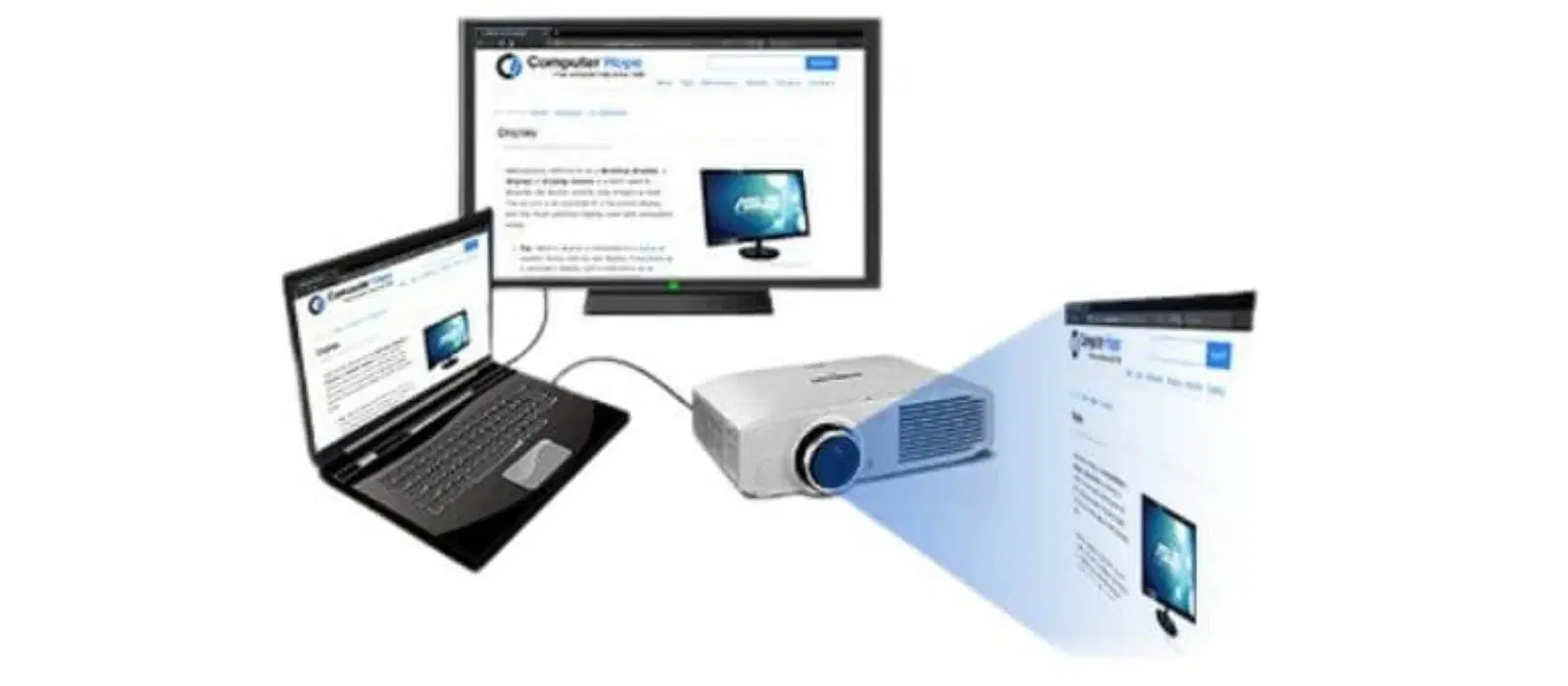
Consumer Electronics
•05 min read
(45)-74f9fffb-62a7-47a7-8714-b26c94ed85c8.png&w=3840&q=75)
Picture this: you're about to deliver a crucial presentation or enjoy a cozy movie night, and you need to connect your laptop to a projector. Knowing how to do this seamlessly can save you from last-minute stress and ensure everything runs smoothly. Let's dive into the essentials of using a projector to laptop connector and explore various methods, from wired to wireless connections.
Definition and Use: HDMI (High-Definition Multimedia Interface) is a popular connector for transmitting high-quality video and audio signals from laptops to projectors.
Steps to Connect:
Locate the HDMI port on your laptop and the projector.
Use an HDMI cable to connect the two devices.
Power on both devices. The projector should automatically detect the laptop's signal.
If needed, adjust the display settings on your laptop to extend or duplicate the screen.
Benefits: HDMI is preferred due to its ability to transmit high-resolution video and audio with minimal interference.
Definition and Use: VGA (Video Graphics Array) connectors are older but still commonly used for video transmission.
Steps to Connect:
Find the VGA port on both the laptop and the projector.
Connect them using a VGA cable.
Power on both devices. If the projector doesn't automatically detect the laptop, use the function key (usually F4 or F5) to switch displays.
Common Uses: VGA connectors are often found in educational institutions and older conference rooms.
Introduction to Wireless Connection: A wireless connection offers the convenience of connecting your laptop to a projector without the clutter of cables.
Benefits: Wireless connections eliminate the need for cables, making the setup cleaner and more flexible.
(44)-b4699c06-32bf-4cfd-a73e-6038a6eb6198.png&w=3840&q=75)
Device Compatibility: Ensure your laptop and projector support wireless connections. Some modern projectors come with built-in wireless capabilities.
Software Installation: Install the necessary software or apps on your laptop that enable wireless projection.
Pairing Devices: Follow the software instructions to pair your laptop with the projector. This usually involves connecting both devices to the same Wi-Fi network and selecting the projector from the list of available devices.
Did You Know? Using a laptop to projector adapter, like USB-C to HDMI, can enable modern laptops without traditional ports to connect seamlessly. This is essential for tech enthusiasts and professionals who frequently present.
Compatibility: Ensure the cable you choose is compatible with both your laptop and projector. Different devices may require different types of connectors.
Quality: Opt for high-quality cables that offer durability and reliable performance. Poor-quality cables can result in signal loss or interference.
Explore a variety of highly recommended laptop projector connectors available at Croma. These connectors ensure seamless connectivity and high performance.
Use a USB to HDMI/VGA adapter. Plug the USB end into your laptop and the HDMI/VGA end into the projector.
%20(Presentation)%20(1600%20x%20600%20px)(555)-c9701baa-0bc7-4b05-8d0f-43d7f61f374c.png&w=3840&q=75)
Check all connections, ensure the projector is set to the correct input source, and update your laptop’s display settings.
Yes, using wireless methods as explained earlier with compatible devices.
HDMI is recommended for its superior video and audio quality.
Test your connection beforehand, ensure all devices are charged, and have backup cables ready.
Connecting a laptop to a projector is straightforward with the right knowledge and tools. Whether using an HDMI, VGA, or wireless connection, ensure your devices are compatible and your setup is tested before any crucial presentation or event. Explore Tata Neu for quality connectors and projectors available at Croma. Enjoy benefits like NeuCoins, express delivery, and expert tech support.
Visit Tata Neu for all your tech needs and enjoy a seamless, rewarding shopping experience.
Using a Cable with Windows 10: Connecting a projector to a laptop with Windows 10 is often a plug-and-play process. However, if the display does not automatically detect, press the Win+P keys to access the project menu, and choose the appropriate display option (Duplicate, Extend, etc.).
Using Bluetooth with Windows 10: If both your projector and laptop support Bluetooth, enable Bluetooth on both devices and follow the pairing process. This is less common but can be useful for wireless setups without Wi-Fi.
Using Cables on Mac: For Mac users, the process is straightforward. Use the appropriate cable (HDMI, VGA, or adapter) and connect it to the projector. For newer Macs, a USB-C to HDMI adapter may be required.
Why Is My Laptop Not Connecting to the Projector? If you encounter issues, first ensure all cables are securely connected and that the projector is powered on. Check the input source settings on the projector. Updating your laptop's graphics drivers may also resolve connectivity issues. If problems persist, consult the projector's manual or seek technical support.
By following these guidelines and considering the factors mentioned, you can ensure a smooth and hassle-free connection between your laptop and projector, enhancing your presentation or entertainment experience.